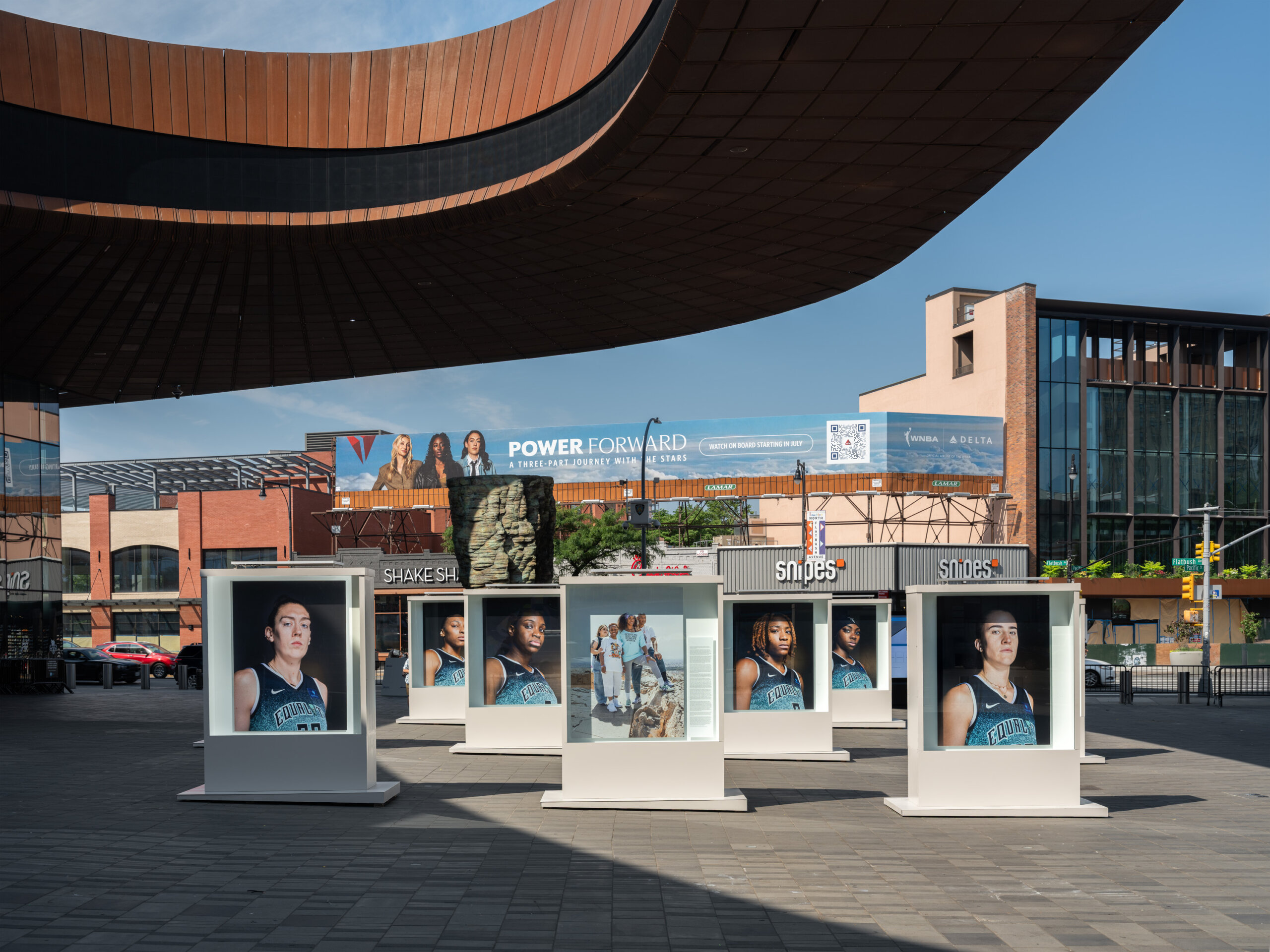
I’ve spent my fair share of time in sports stadiums and arenas. Like museums, they are special places where a wide variety of people come together with a common goal to witness excellence. The businesswoman and philanthropist Clara Wu Tsai—who owns the Brooklyn Nets, Barclays Center, and, as of 2019, the New York Liberty—is working to bring the worlds of art and sports closer together. A noted collector, she has been collaborating with artists including LaToya Ruby Frazier, Sarah Sze, and Rashid Johnson to develop ambitious art for the Brooklyn stadium.
I tried my hand at combining these two sectors last year, when I helped develop a line of artist-designed tote bags and hats for the New York Mets. The experience made me eager to connect with Wu Tsai, who has helped Barclays evolve into the culture and entertainment platform it is today. This month, the stadium unveiled a new project by Frazier, the artist’s first public work. Frazier designed nine-foot-tall portraits of each player on the Liberty’s 2024 championship-winning roster—one side features a portrait of a player in uniform, and the reverse showcases the same player with their chosen family.
I chatted with Wu Tsai about what it means to commission with care and what the art world can learn from her masterclass in reaching new audiences.
Sophia Cohen: I’m really happy we’re doing this. I feel there’s a lot of synergy between us—loving art and loving sports. You’re way more actively involved as a co-owner, whereas I’m just the family of [the owner, Steve Cohen is Sophia’s father]. But we both want to bring art out of the white cube. I’d love to hear a little more about the Social Justice Fund, which aims to address systemic inequality in Brooklyn, and the development of your public art projects.
Clara Wu Tsai: The Social Justice Fund started in 2020, and one of our first projects was a public art commission: the neon art installation by Tavares [Strachan] that states, “We Belong Here” in Tavares’s own cursive script. This phrase is somewhat of an anthem of the Social Justice Fund. It is a message that we hoped could instill a sense of agency and a belief that all people in Brooklyn can coexist in beautiful ways. We have a belief that art is a powerful tool for fostering empathy and community. We believe that art should be accessible to all. These themes form the basis for why we want to commission more public art at the Barclays Center.
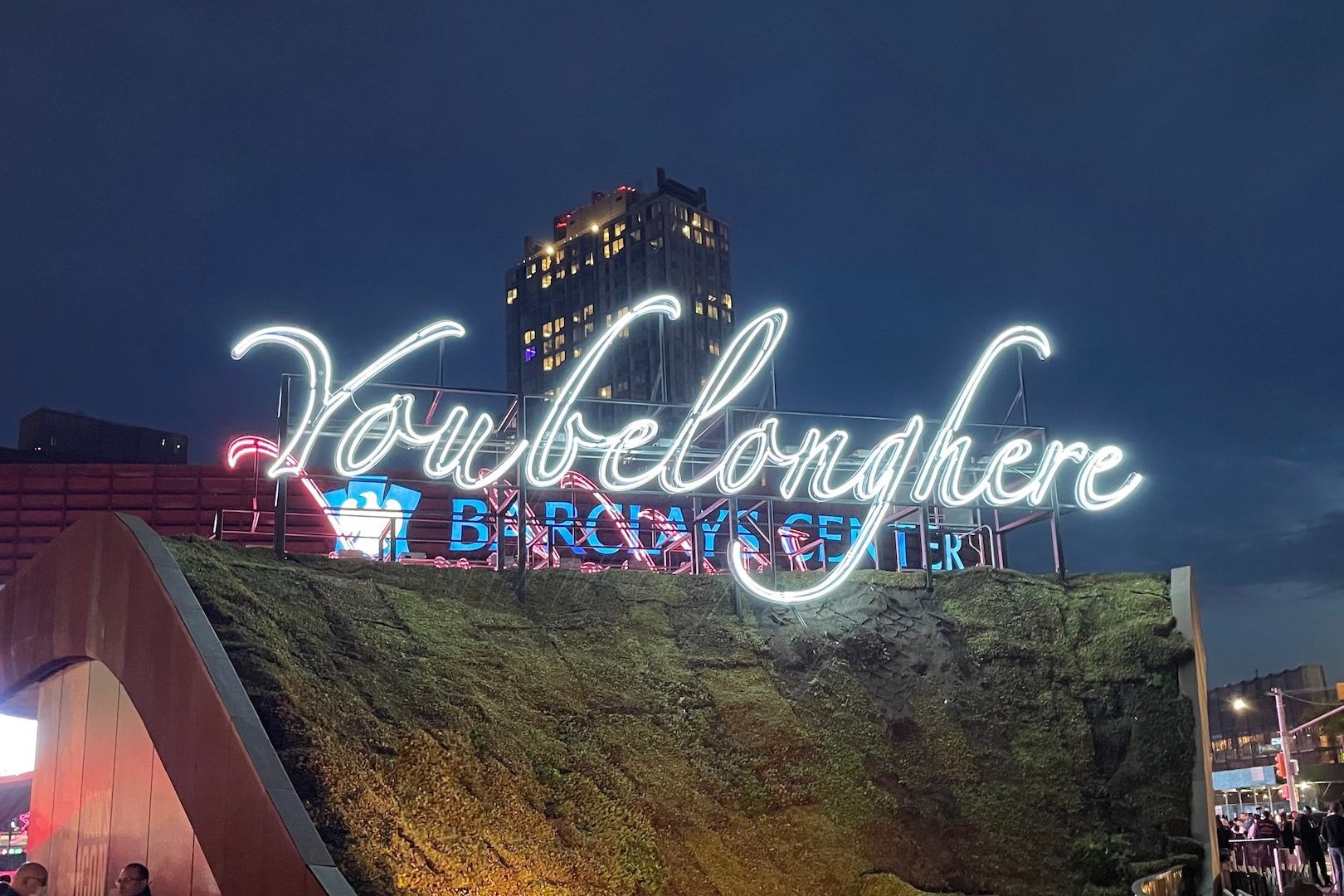
Cohen: You’re working with LaToya Ruby Frazier, Sarah Sze, and Rashid Johnson. I’ve actually worked with Rashid and Sarah Sze on a [New York] Mets project, so I know how excited they are to be more involved in New York sports. Gavin Brown represented LaToya Ruby Frazier when I was working there, so I know her artwork very well, but I’m so curious to hear her take on this project.
Wu Tsai: I met LaToya through the Gordon Parks Foundation in 2023, the year that I was honored at their gala. In my remarks, I talked about how I was motivated to follow Parks’s example in using art and storytelling to bring visibility to the WNBA. That resonated with LaToya because she is a former basketball player and has always wanted to tell their stories. When we met, we quickly discovered our shared passion for basketball and uplifting women athletes.
When we initially talked about her doing a project about the players of the New York Liberty, she was just getting ready to mount her show at MoMA, and so the timing wasn’t right. The following year, we advanced to the championship round for the second time. We thought this was the right time to create a series of portraits of the team.
LaToya focused on making sure the players didn’t feel that she was just a photojournalist. She really embraced the players. She noticed the duality—they’re heroes, but she also wanted to reveal their humanity. In their display cases, the pieces are about nine feet tall. There are family portraits alongside images of each player with their game face on, and there are also family testimonials, which are an essential part of the project. She traveled to their hometowns and took the time to connect with them.
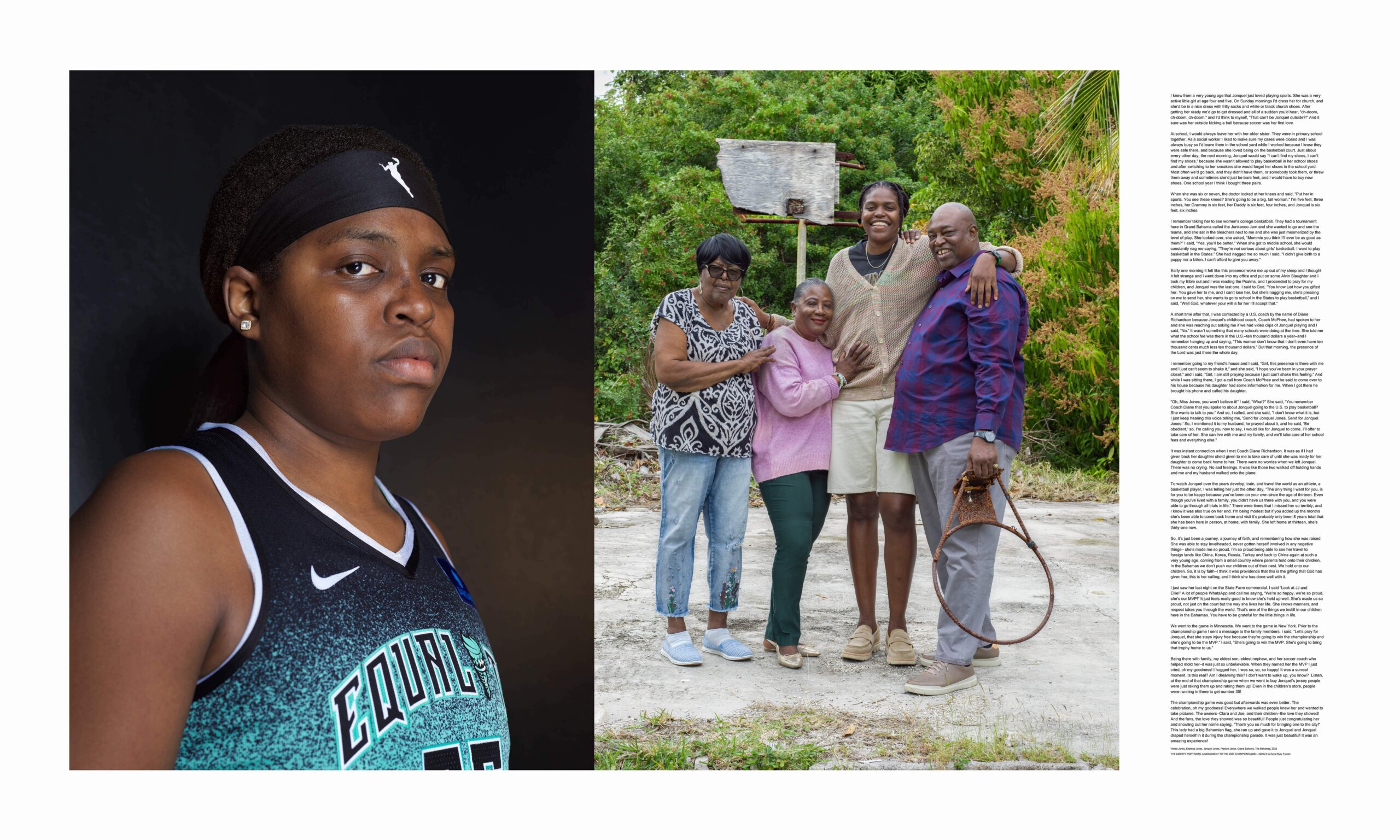
Cohen: I’d love to talk about bringing the Liberty to Barclays and putting them on an equal playing field with the NBA. What was your mindset in doing that?
Wu Tsai: When we bought the team, they were playing in Westchester County Center, an arena that had a seating capacity of 2,000. In the early days, the team played at Madison Square Garden to crowds of 18,000. So one of the first things we did was bring them to Barclays Center, where the Brooklyn Nets play. The vision was to field a team that could win, bring the old fan base back, and attract new audiences. We believed in the business potential of the WNBA. We started to invest in the team, in player health and wellbeing, and in nutrition and performance. We felt that women’s sports had been underinvested in.
Cohen: As you said before, [working with] artists and athletes can be similar: there’s always a little bit of a dance with what’s possible and where to meet in the middle. I’d be curious to hear about surprises that arose while working with artists or complexities that you found interesting as both a collector and a sports team owner.
Wu Tsai: Realizing the vision for this project was complex. With the Monument to Champions, the idea was conceived by the artist in collaboration with me. When you have an art project involving the entire team, there is a process to get the players to buy in. We invited them to a tour of LaToya’s MoMA show in its final weeks—it was a great way to introduce them to her work, and for LaToya to share more about her process. We wanted to give the team the time to understand and embrace LaToya’s approach to storytelling.
This is her first public art piece. She was very involved in designing the sculptural installation, as much as shooting the portraits themselves. She was interested in the sightlines of the portraits and how they will be experienced by visitors and fans as they move through the plaza and into the arena. Through all the difficulties in scheduling shoots with the players and their families, she was very gracious. Public spaces always have so many unexpected parameters—weather, light, egress. While I am sure that some aspects were not what she had envisioned, she was incredibly agreeable and joyful from start to finish.
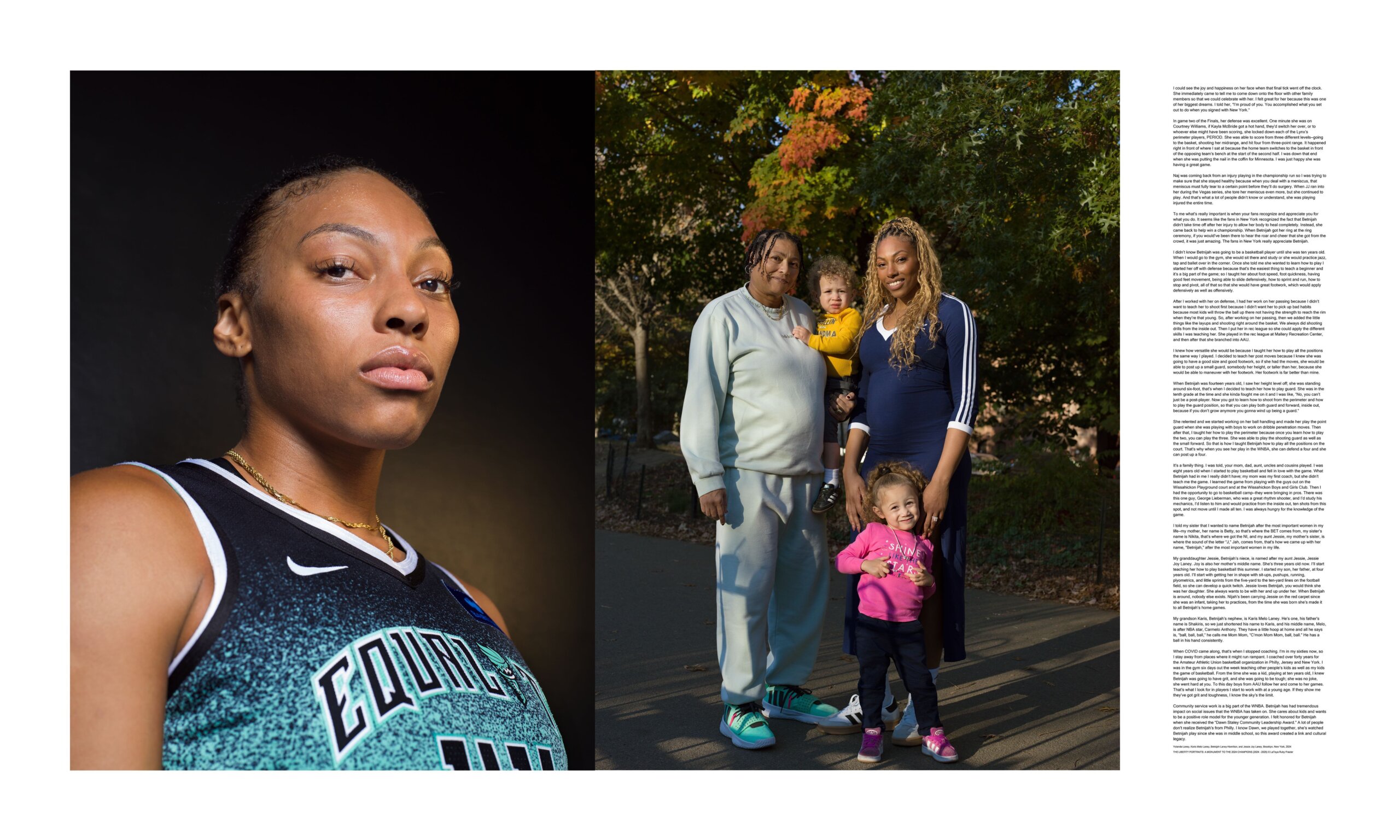
Cohen: It takes a lot for an artist to wiggle around what may be their perfect vision in order to make something happen. That is a testament to you creating that space for her, and also her wanting to be in the space. What I did at the Mets was solely a giveaway situation. But in this case, you’re actually blending worlds together. In the beginning, it is a slightly inorganic situation because these worlds probably wouldn’t meet unless it was instigated by the player or their team or some sort of brand. So this is a really interesting way to integrate art for the public, but also some of the team members. Have the other artists you’ve commissioned started their work yet?
Wu Tsai: We recently went to see a model of Sarah [Sze]’s sculpture at her studio. Our whole team—the architects who are doing the renovation of Barclays Center, our senior executive leadership team, the CEO, and I—met with her at her studio to understand her vision, how it expands her practice, and how it will fit in with the redesign of the atrium.
Cohen: That’s amazing. So it’ll be one of her big installations, similar to what she has at LaGuardia airport?
Wu Tsai: Similar, but more ambitious. The LaGuardia piece is constructed from static images, and the shape and thematic intention of this work, as well as Sarah’s use of moving images, will be quite different. Sarah’s a huge basketball fan, she’s spent a lot of time at the arena, and it’s given her a tremendous understanding of the space and how we want visitors to experience it.
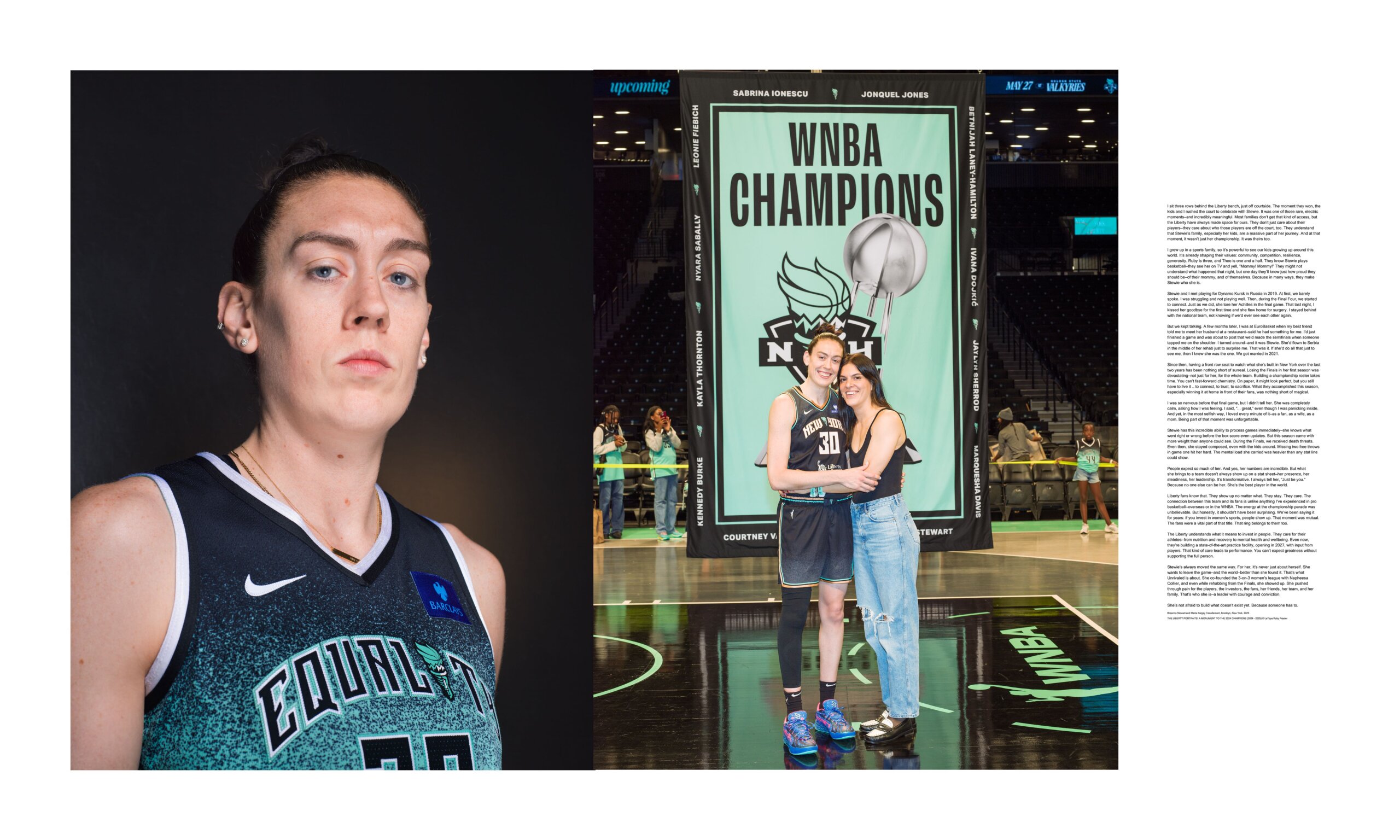
Cohen: Do you know what Rashid’s doing yet?
Wu Tsai: Yes, it’s actually the large-scale “Anxious Audience” painting on the first floor of his current show at the Guggenheim.
Cohen: Oh, I love that piece. That’s one everyone takes photos in front of.
Wu Tsai: When it gets to Barclays Center, we hope people will recognize it and want to photograph themselves in front of it, too.
Cohen: How would you compare and contrast sports fans and art fans?
Wu Tsai: Sports fans are similar to art enthusiasts because they’re seeking some sort of transcendence. When sports fans go to watch an NBA or WNBA game, they’re going to watch the impossible. They want to see a spectacle; a slam dunk or a half-court buzzer-beater, a three-point shot off of one leg. After the game, they’ll go to a sports bar and talk about it. I think that the same happens when people go see art. You might see a work that shifts your perspective or makes you see something differently.
Showing art in a sports context feels natural to us. Brooklyn and New York have more artists per capita than any other city in America. It makes sense for us to showcase art in our arena that celebrates and mirrors the diversity of Brooklyn.
Cohen: I’ve had a lot of discussions with people about the frustrations of growing the art audience. Looking at the work that you’ve done for Liberty, are there any lessons that the art world could learn about growing a fan base?
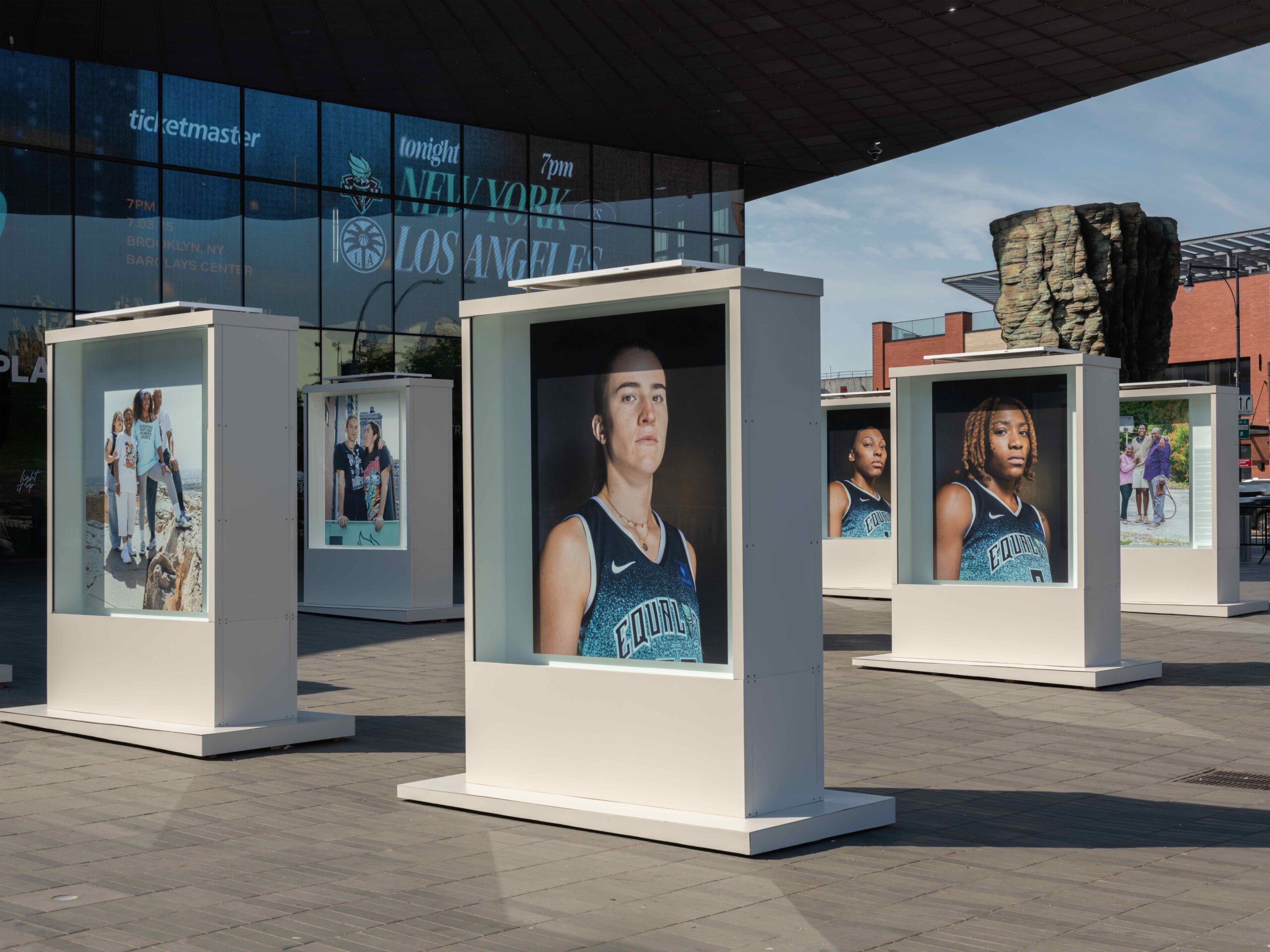
Wu Tsai: The WNBA, including the Liberty, has been successful in attracting a non-traditional sports fan, meaning a new class of fans that didn’t previously watch sports. People have discovered that women’s basketball is competitive, thrilling, physical, and skillful. We also offer a great game day experience, including our mascot, Ellie the Elephant, who’s now an influencer in her own right. There’s always something going on, which means that the games have become a destination. You go to watch basketball, but you also go to be entertained. Many people say that we have one of the best atmospheres in all of sports.
Art, music, and fashion are at the center of New York’s creative energy, so it is natural for us to showcase them. Major fashion and beauty brands, such as Off-White, Fenty Beauty, and Essie, are Liberty sponsors. Because of this, our games have become more of a cultural experience, and we have been able to attract a broader audience. I would say that the art world could probably take some lessons from this because the potential audience for art really is everywhere. How do you create a space that engages people with the broader notion of not just art, but culture?
Cohen: In addition to your work with the Liberty, you have an amazing collection of your own. What piece of art would you say is your favorite? One you would grab when fleeing from disaster if you could.
Wu Tsai: I would choose a light string installation by Felix Gonzalez-Torres. The light strings are a metaphor for relationships and the passage of time. It’s an object that is deceptively simple: just a string of low-wattage bulbs, glowing softly in space. But it contains a universe of meaning. It’s a work about impermanence: bulbs will burn out, the string might tangle; the installation is never fixed—it can change every time it’s shown. Gonzalez-Torres created these works in the shadow of his partner’s illness and death. Each bulb symbolizes love, tenderness, and the quiet endurance of connection. For me, it embodies the idea that something simple, spare, and ephemeral can be so full of feeling.










 in your life?
in your life?

